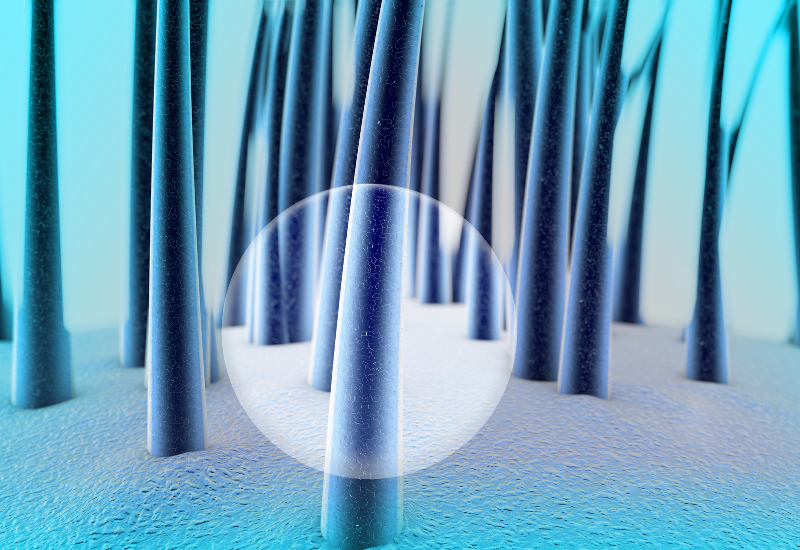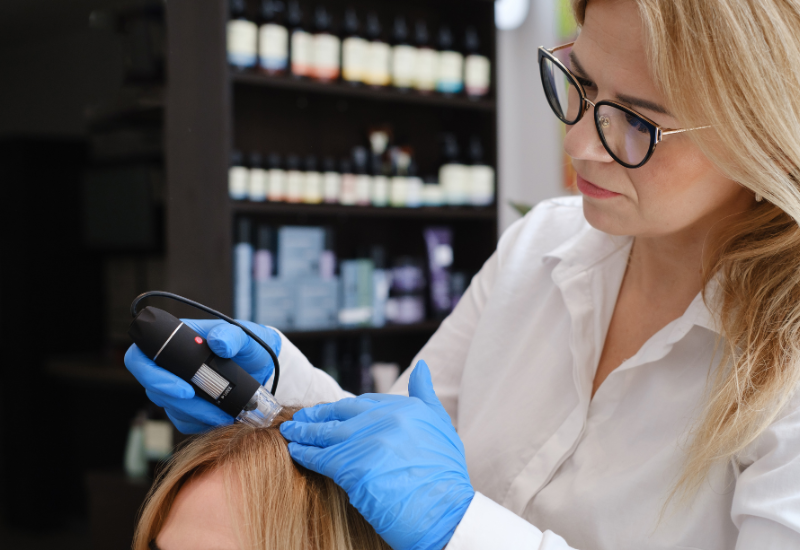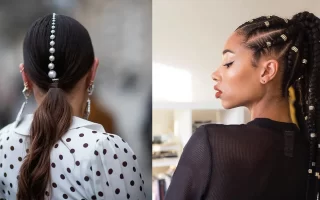Table of Contents
Delving into Hair Structure
Hair is more than just a natural accessory; it is a complex and fascinating structure. The hair shaft, the visible part of the hair, is made up of three layers: the cuticle, the cortex, and the medulla.
The cuticle, the outermost layer, consists of overlapping cells that protect the inner layers. It plays a crucial role in hair’s shine and resilience, as a healthy cuticle reflects light and resists damage.
The cortex, the middle layer, contains the fibrous protein keratin and is responsible for hair strength, elasticity, and colour. The natural pigments, or melanin, found in the cortex give hair its unique hue.
The medulla, the innermost layer, is the hair’s core. It is not always present in every hair type, particularly in fine hair, and its function is not yet fully understood.
Hair Follicles and the Hair Growth Cycle

Hair grows from follicles, tiny sacs in the skin, which also contain sebaceous glands that produce sebum, an oil that moisturises the scalp and hair. At the base of the follicle is the hair bulb, where cells divide and push upwards to form the hair shaft.
The hair growth cycle consists of three phases: Anagen, Catagen, and Telogen.
Anagen Phase: This is the active growth phase, during which cells in the hair bulb rapidly divide, forming the hair shaft. The Anagen phase can last anywhere from 2 to 7 years, with hair growing approximately half an inch (1.25 cm) per month.
Catagen Phase: This is the transitional phase, lasting about 2 to 3 weeks. The hair growth process slows down, and the hair follicle begins to shrink, detaching from the hair bulb.
Telogen Phase: Also known as the resting phase, this phase lasts for about 3 months. No growth occurs during this time, and eventually, the hair strand sheds, making way for a new one to grow in its place.
Factors Affecting Hair Growth and Health
Various factors can influence hair growth and health, such as genetics, hormones, nutrition, and overall health. Age, stress, and certain medical conditions can also impact the hair growth cycle and lead to hair loss or thinning. We recommend getting the right Hair Treatment in a trusted Hairdressing Salon based on your concerns.
Caring for Your Hair with Science in Mind
Understanding the science of hair and its growth cycle can help you make informed decisions about hair care. Choosing products that nourish and protect the hair shaft and cuticle, as well as maintaining a healthy lifestyle, can contribute to the overall health of your hair.
In conclusion, hair is a remarkable biological structure, and understanding its composition and growth cycle can help us appreciate its complexity. Armed with this knowledge, we can make better choices for hair care and strive to maintain its health and beauty.
Understanding the Impact of Hair Extensions on Hair Health
While hair extensions can enhance volume and length, it’s essential to understand their potential impact on natural hair health. If not properly applied and cared for, hair extensions can lead to damage, including breakage and even hair loss.
This is often due to tension at the attachment points, or from the extra weight pulling on the natural hair. Therefore, professional application by a great hair extensions salon and regular maintenance is crucial. Additionally, understanding the natural structure and growth cycle of hair can help individuals use extensions safely.
For instance, it can inform the best type of extensions to use, the safest way to attach them, and how to care for the scalp and natural hair while wearing extensions. This can help to ensure that the beauty of your hair extensions enhances your natural hair’s health, rather than compromising it.




